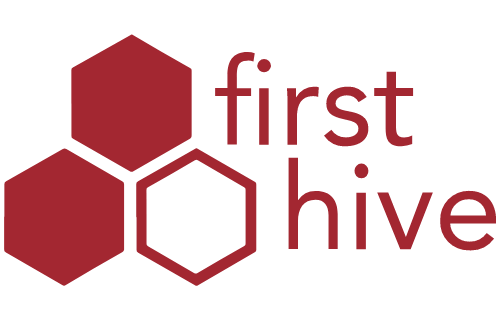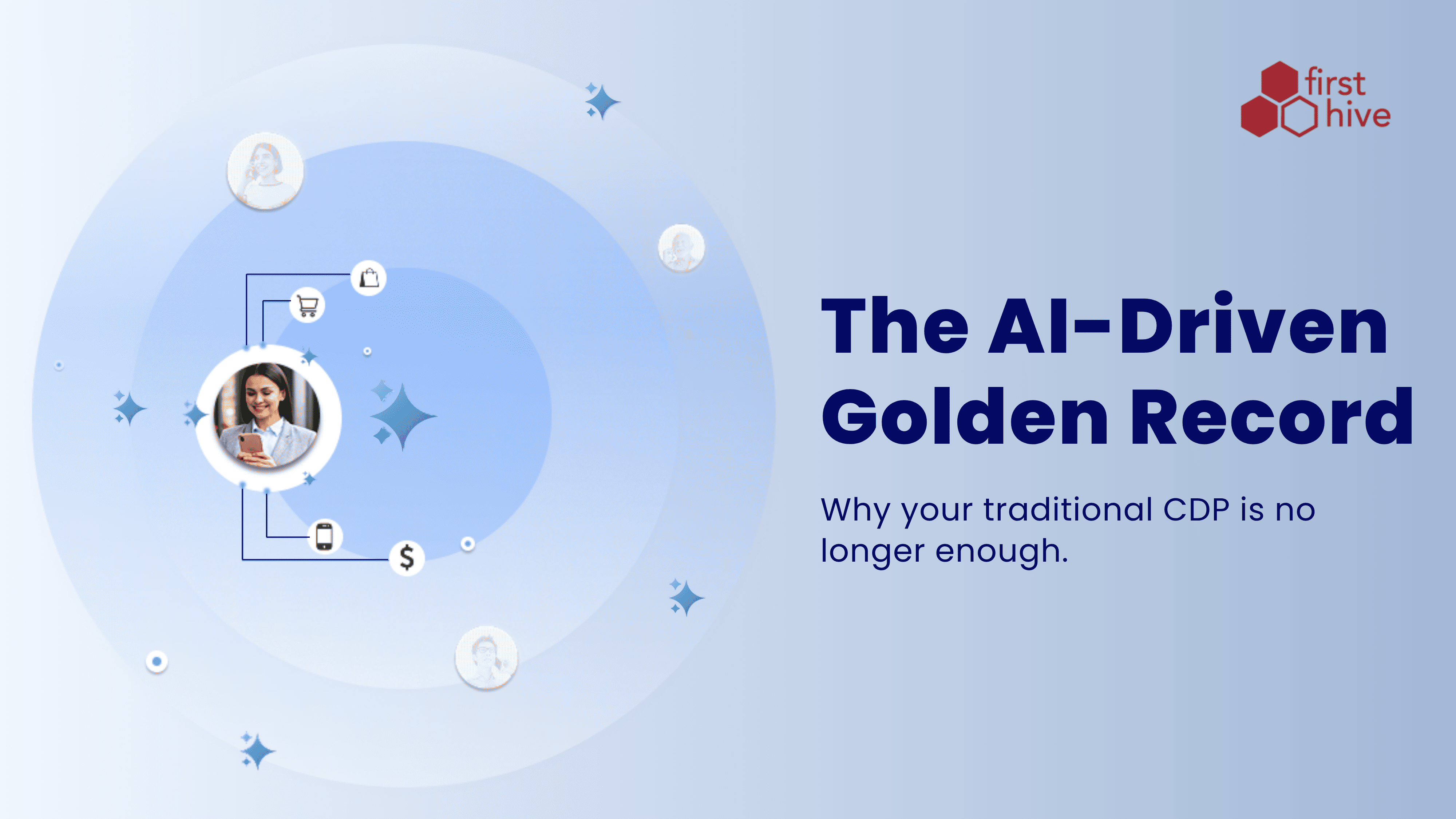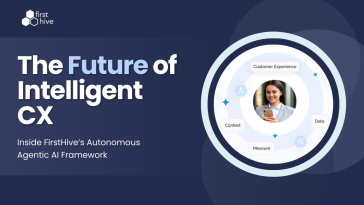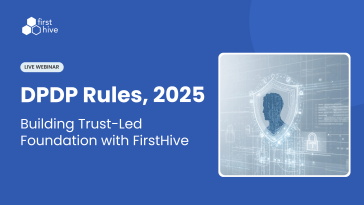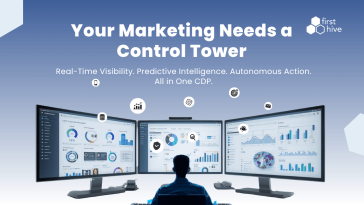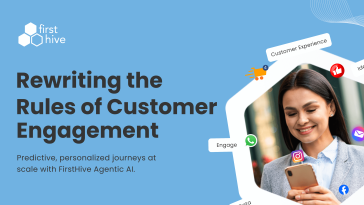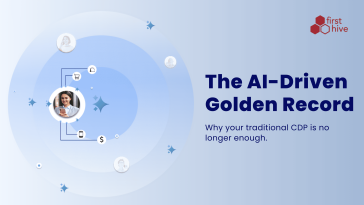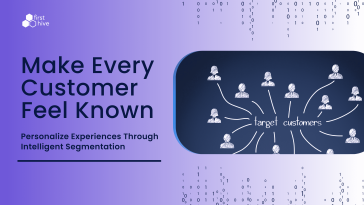Five years ago, Customer Data Platforms promised to solve the fragmented data problem. Marketing teams rushed to implement them, hoping to finally achieve that elusive single customer view. Fast forward to today, and many organizations are asking: "Why are we still struggling with duplicate records, data conflicts, and profiles that feel perpetually out of date?"
The answer isn't that CDPs failed—it's that the customer data challenge evolved faster than the solutions designed to solve it.
The Evolution of Customer Data Platforms
Traditional CDPs: The Foundation
Early customer data platforms focused on basic ingestion—pulling data from multiple sources and storing it in one place. These platforms captured interactions, but the unification was largely manual. Data engineers wrote rules, configured matching logic, and hoped the batch processes would run smoothly overnight.
The limitation? Every new data source meant new configuration. Every edge case required a new rule. And real-time wasn't really real-time—it was "as fast as the next batch job runs."
Composable CDPs: The Flexibility Play
As platforms matured, architectural improvements followed. Composable CDPs recognized that enterprises needed flexibility, not just features. They offered modular components, better integration capabilities, and the promise of "best-of-breed" solutions working together.
Progress, certainly. But composability alone didn't solve the fundamental challenge: making sense of messy, conflicting, incomplete customer data at scale. You could connect more systems, but someone still had to figure out which version of the truth to believe.
AI-Driven Golden Records: The Intelligence Layer
The latest evolution adds what was always missing—intelligence that works autonomously. This isn't AI as a feature add-on. It's Agentic AI as the operating system for customer data, continuously learning, adapting, and improving without human intervention.
FirstHive is pioneering this approach by recognizing that customer data platforms needed to evolve beyond passive storage and rule-based processing. The challenge wasn't just connecting more data sources or processing faster—it was making the data itself intelligent. FirstHive's Agentic AI Framework transforms fragmented customer data into unified golden records that think, learn, and act autonomously.
What Makes FirstHive's Agentic AI Different?
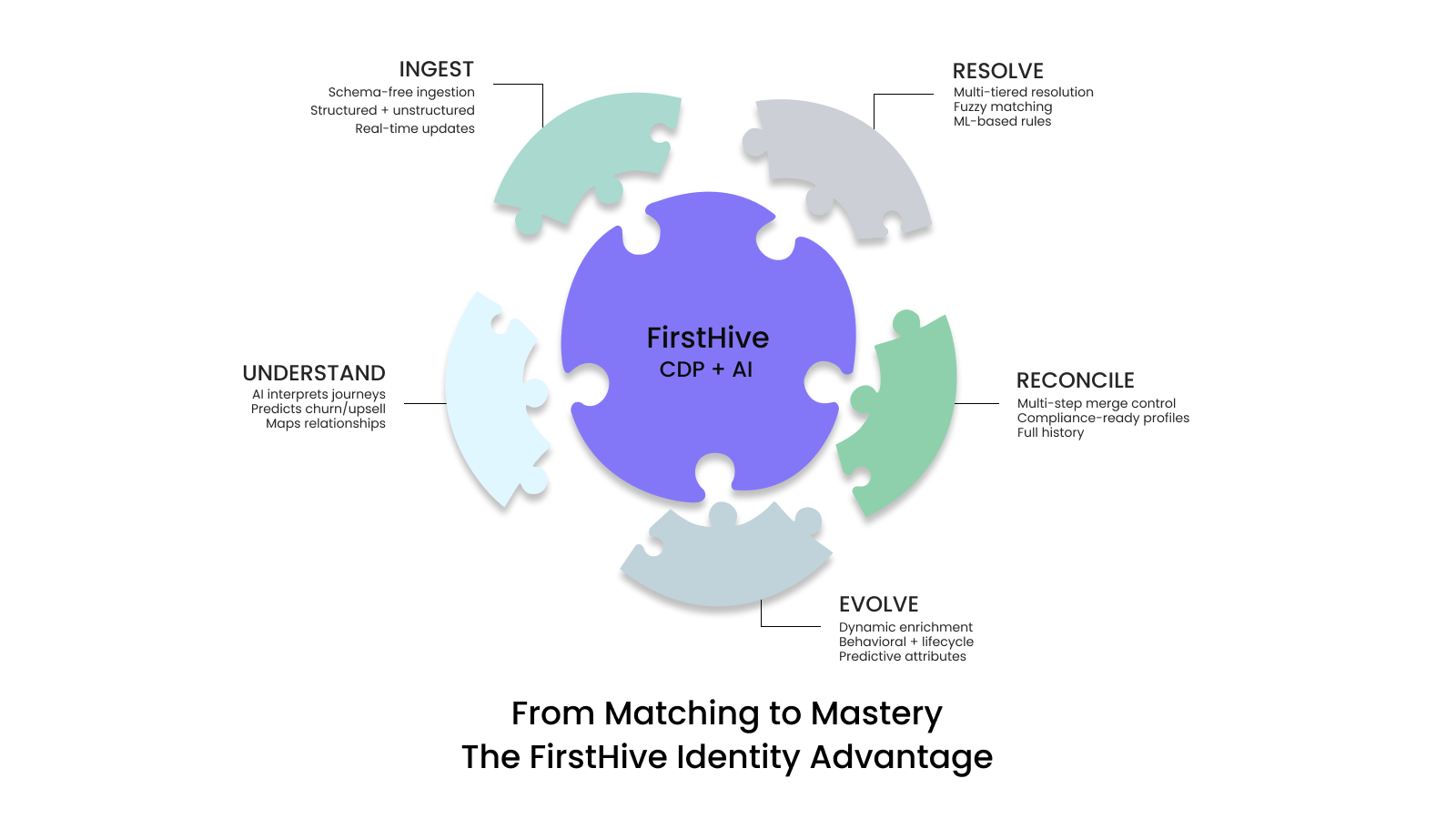
The word "agentic" matters here. Traditional AI in customer data platforms might flag potential duplicates or suggest matches. FirstHive's Agentic AI takes action—merging profiles, resolving conflicts, enriching attributes, and healing data quality issues autonomously, without waiting for human intervention.
Where other platforms require extensive configuration for every scenario, FirstHive's intelligence layer adapts to your data patterns automatically. The result? Near perfect profile accuracy even with incomplete or conflicting data, achieved through a sophisticated five-layer approach:
Ingest: Schema-free ingestion means new data sources don't require extensive configuration. Structured, unstructured, semi-structured—the system adapts rather than breaking.
Resolve: Multi-tiered resolution combines deterministic matching with probabilistic logic and machine learning. When data is incomplete or slightly inconsistent, the AI doesn't give up—it makes intelligent inferences while maintaining near perfect accuracy thresholds.
Evolve: Profiles aren't static snapshots. They continuously enrich with behavioral signals, lifecycle indicators, and predictive attributes. The system tracks history while keeping current state immediately accessible.
Understand: This is where intelligence becomes insight. The AI interprets customer journeys, identifies relationships between profiles, predicts outcomes like churn or upsell propensity, and surfaces patterns that would be invisible in traditional rule-based systems.
Reconcile: When conflicts arise—and they always do—multi-step merge control makes decisions based on data quality, recency, source authority, and learned patterns. Every merge is auditable and reversible, maintaining governance while operating autonomously.
The Self-Healing Advantage
Perhaps the most transformative capability is self-healing data quality. Traditional platforms require constant monitoring and manual intervention when anomalies appear. By the time someone notices a data quality issue, thousands of records might be affected.
Agentic AI monitors continuously, detects anomalies as they emerge, auto-corrects issues in real-time, and learns patterns to prevent similar problems in the future. It's the difference between a building with security guards checking doors periodically versus one with intelligent systems that detect and respond to threats instantly.
Real-Time Isn't Just Speed -It's Opportunity
When golden records update instantly across all 750+ possible data sources, you unlock use cases that batch processing simply cannot support. A customer service representative sees the abandoned cart from ten minutes ago. A marketing automation system triggers the perfect message at the perfect moment. An analytics dashboard reflects current behavior, not yesterday's summary.
Real-time personalization stops being aspirational and becomes operational reality.
The Network Effect of Relationships
Modern customer data isn't just individual profiles—it's networks of relationships. Household connections, B2B account structures, cross-device linkages. Agentic AI applies configurable matching to group profiles appropriately while respecting privacy boundaries and compliance requirements.
The result? Marketing messages don't duplicate across household members. B2B sales teams see the complete buying committee. Analytics reflect true customer lifetime value across all touchpoints.
Future-Proofing Through Intelligence
Here's what keeps technology leaders up at night: will this investment still be relevant in three years? With an AI-driven approach, the answer is yes—because the system improves over time rather than becoming legacy infrastructure.
New data patterns? The AI adapts. Changing business rules? Configuration updates without rebuilding. Evolving privacy regulations? Governance controls that flex across jurisdictions. It's infrastructure that gets smarter, not older.
Making the Shift
If your organization is struggling with customer data quality despite having a CDP, the issue probably isn't your team or your data sources. It's that you're using second-generation tools to solve third-generation problems.
The evolution from traditional CDPs to composable architectures to AI-driven golden records isn't just about features—it's about fundamentally changing what's possible when your data infrastructure thinks, learns, and acts autonomously.
The question isn't whether to adopt Agentic AI for customer data. It's whether you can afford to wait while competitors gain ground with intelligence you don't yet have.
Ready to see how Agentic AI can transform your customer data strategy? Our team can show you exactly how FirstHive's intelligent golden records eliminate data quality issues, enable real-time personalization, and deliver measurable ROI for your organization. Request a demo to discover what's possible when your customer data becomes truly intelligent—or reach out to our team to discuss your specific data challenges and how FirstHive can solve them.
